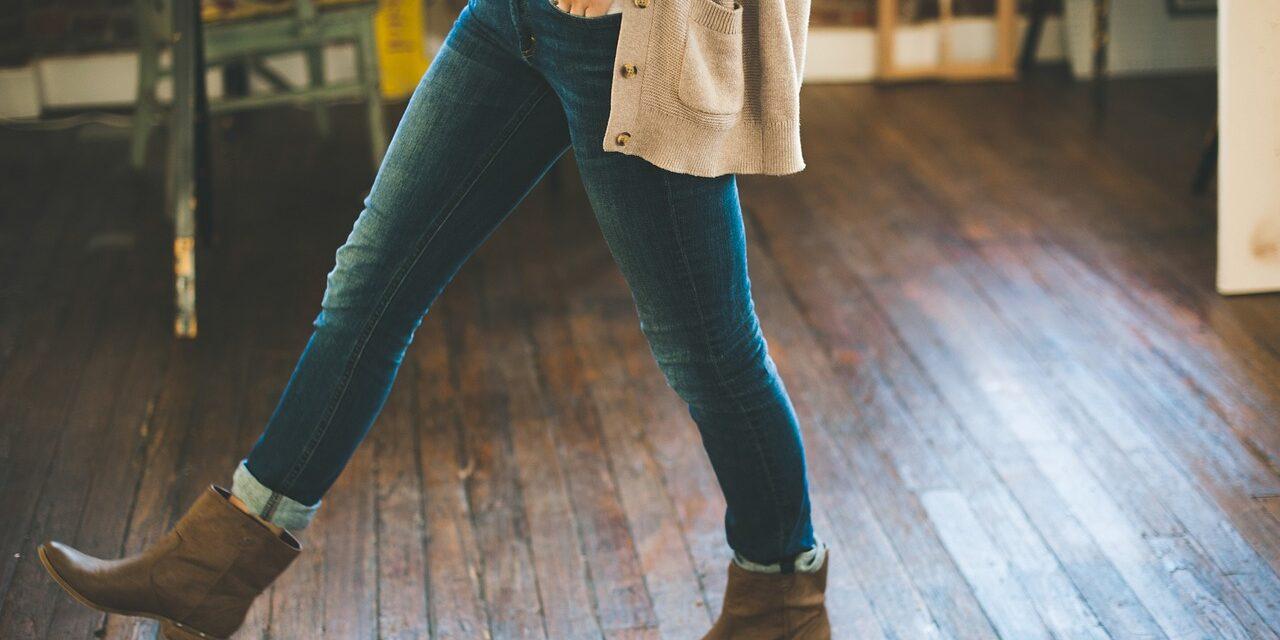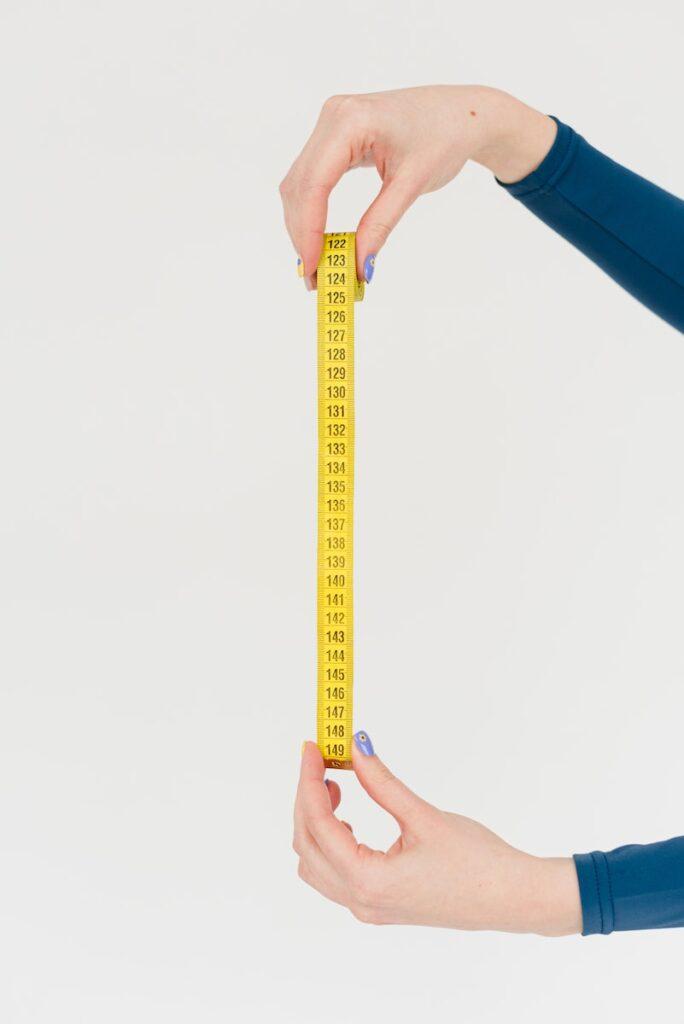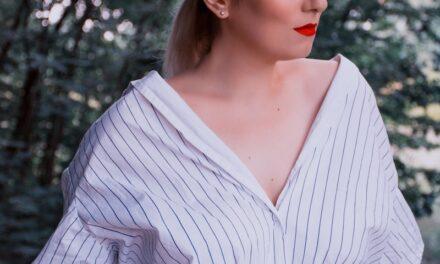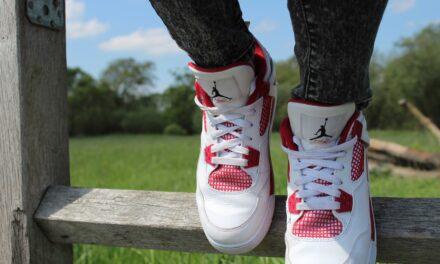This article teaches you how to how to tell if a pair of jeans will fit perfectly. Learn about measuring, fits, fabrics, and small details that make a big difference. If you are interested in learning about this tips, please read on.
General Tips on How to Tell If Jeans Will Fit
When shopping for jeans online or in-store:
1. Check the size chart:
The first step towards finding a well-fitting pair of jeans is understanding your size measurements. Most stores provide size charts that correlate with waist circumference/inseam length/hip circumference measurements.
2. Look at the fabric content:
The type of denim used to make a pair of jeans affects how they fit on your body. Stretcher denim fabrics are more forgiving when it comes to sizing than rigid ones.
3. Pay attention to cut:
Different cuts/flares/leg openings work better for different body types – this will be discussed further below – but generally speaking high-waisted cuts elongate legs while mid-rise lengths create an hourglass shape silhouette.
4. Consider tailoring:
Even if you find a pair of jeans that fit well overall they may still require hemming or taking in at certain areas to achieve the perfect fit.
By following these general guidelines, you can reduce the likelihood of purchasing ill-fitting jeans. Nevertheless, it does not harm to try on several pairs in-store or order multiple sizes/brands online to ensure a great fit.
Measuring Yourself
Finding the perfect pair of jeans can be a daunting task, but taking accurate measurements of your waist, hips, and inseam is a crucial first step in the process. Measuring yourself ensures that the jeans you try on will fit properly and flatter your body shape. Before measuring yourself, it’s important to wear form-fitting clothing and stand up straight.
Taking Accurate Measurements
To measure your waist, wrap a soft measuring tape around the narrowest part of your waistline. Make sure the tape is snug but not too tight. For accurate results, measure your waist at least twice and take an average of the two measurements.
For hip measurements, wrap a measuring tape around the widest part of your hips. Again, make sure the tape is snug but not too tight for accurate results.
As with waist measurements, it’s best to measure at least twice and take an average. The inseam measurement is taken from the crotch to the bottom hem of pants or jeans.
To get an accurate measurement for jeans, wear shoes with a similar heel height to those you plan on wearing with your new denim. It’s best to have someone else measure inseam length so that you can stand up straight without bending over.
Using A Size Chart
Once you’ve taken these three key measurements (waist circumference, hip circumference, and inseam length), use them as a guide in combination with a size chart when selecting jeans or pants online or in-store. A size chart typically lists sizes based on waist circumference (in inches or centimeters) and inseam length (in inches).
Hips are often included as another measurement point for women’s jeans because women tend to have more variation in hip width than men do. When using a size chart, pay attention to the specific brand or style of jeans you’re interested in and compare your measurements to the corresponding size chart for that brand or style.
Keep in mind that sizes can vary between brands, so it’s always best to double-check measurements and try on jeans before making a purchase if possible. By taking accurate measurements and using a size chart, you can increase your chances of finding the perfect pair of jeans that fit comfortably and flatter your body shape.
Understanding Different Fits
Jeans come in a wide variety of styles and fits, which can make it hard to choose the right one for your body type. Here is an overview of the most popular types of jeans fits:
Skinny Jeans
Skinny jeans are fitted through the entire leg and taper at the ankle. They are a popular choice among women because they create a flattering silhouette that elongates the legs. However, they can be uncomfortable if they are too tight, so it’s important to find a pair with enough stretch.
Straight Jeans
Straight jeans have a consistent width from the thigh down to the ankle. They are a classic style that is versatile and flattering on many body types. Straight jeans work particularly well on athletic or hourglass figures.
Bootcut Jeans
Bootcut jeans have a slightly wider leg opening than straight jeans, making them an ideal choice for wearing with boots or other shoes with larger openings. They typically fit snugly through the thighs and hips before flaring out below the knee.
Flare Jeans
Flare jeans have an exaggerated bell-bottom shape that flares out from mid-thigh down to the ankle. This style was popular in 1970s fashion and has recently made a comeback thanks to its retro-cool look.
Boyfriend Jeans
Boyfriend jeans have a relaxed fit throughout the legs and hips, giving them an effortlessly casual vibe. They often sit low on the waist and are meant to be rolled up at the bottom for extra style points. It’s important to note that different brands may vary in their interpretation of these fits, so it’s always helpful to try on multiple pairs before making your final decision.
Which Fits Work Best for Different Body Types
While every body is unique, there are some general guidelines that can help you choose the most flattering and comfortable fit for your body type. If you have an hourglass figure, straight leg jeans will accentuate your curves without adding bulk. If you have a pear-shaped figure, bootcut or flare jeans can balance out wider hips.
For those with an apple-shaped figure, high-waisted skinny jeans with a little stretch can smooth and elongate the silhouette. Athletic figures often look great in skinny or straight-leg jeans.
Ultimately, the best way to find out which fits work best for your body type is to try on different styles and see what feels comfortable and looks flattering. Don’t be afraid to take your time and experiment with different brands and sizes until you find the perfect pair of jeans for you.
Trying Them On
Now that you have an idea of what size and style of jeans you want, it’s time to try them on. Trying on jeans can be a frustrating experience, but if done properly, it will save you time and money in the long run.
How to Properly Try on Jeans
The first step in trying on jeans is to make sure they are the correct size. Always start with your usual size and go up or down from there.
If you are unsure about the correct size, take several different sizes into the fitting room with you. When trying on jeans, make sure to wear shoes that have a similar heel height to what you would normally wear with the jeans.
This will give you an accurate idea of how they will fit when worn outside of the fitting room. Before putting the jeans on, examine them for any defects or damage.
Look for any loose threads or missing buttons. Take note of these defects before buying so that you don’t end up paying full price for damaged goods.
What to Look for When Trying Them On
A common problem when trying on jeans is waistband gap. This occurs when there is a gap between your waistline and the waistband of the jeans. To avoid this problem, make sure the waistband fits snugly around your waist without being too tight or uncomfortable.
Another important factor is length. Make sure that lengthwise, your desired look is achieved (e.g., ankle-length vs full-length).
Also double-check whether crop tops or longer tops go well with your chosen length so that they complement one another perfectly. If considering skinny or slim-fitting styles where fabric can be form-fitting around thighs/calves/ankles- take note of how the fabric falls around those regions.
You want to avoid having fabric clinging too tightly or gathering in unflattering ways. Pay attention to how the back pockets fit your body shape.
Ideally, back pockets should be positioned in a way that flatters your figure and doesn’t create any awkward bulges or sagging. By following these guidelines when trying on jeans, you can ensure that you are purchasing a pair of jeans that will fit comfortably and flatter your figure.
Paying Attention to Fabric and Stretch
Different Denim Fabrics and Their Characteristics
When shopping for jeans, it’s important to consider the fabric type. Denim comes in a variety of fabrics such as 100% cotton, cotton-polyester blends, and Lycra blends.
Each type of denim has its own characteristics that can affect the fit and comfort of the jeans. 100% cotton denim is a classic choice for jeans, known for its durability and structured appearance.
However, it is also known to be rigid and less forgiving when it comes to fit. This type of denim requires some breaking-in time before it conforms to your body shape.
Cotton-polyester blends are often used in lower-priced jeans because they are cheaper to produce than 100% cotton. They are softer than 100% cotton but do not have as much structure or durability.
Lycra blends, on the other hand, add stretchiness to denim which can help improve the fit and comfort of the jeans. These types of jeans are often marketed as “stretch” or “flex” denim.
The Importance of Considering Fabric Content When Selecting Jeans
The fabric content of your jeans will impact how they fit you over time. For example, if you purchase a pair of 100% cotton jeans that feel snug when you try them on in-store, they may end up feeling too tight after washing due to shrinkage. If you prefer a more fitted silhouette but want some stretchiness in your jeans, look for those made with Lycra or spandex blend fabrics.
These types of fabrics will allow movement without losing shape or causing bagging around the knees or hips throughout the day. It’s also essential to consider aspects like weight while looking at fabric content.
Heavier fabrics like raw selvedge denim might look great aesthetically but can be tough to wear. They’re often rigid, which makes them uncomfortable and takes time to break in.
When selecting your jeans, pay careful attention to the fabric content. It will affect how the jeans fit you over time and can impact your comfort level.
Overall, it is important to find a balance between durability, structure and stretchiness in denim fabrics. Consider what you prioritize in your pair of jeans – if it’s comfort or durability or something else – and pick according to that priority.
Small Details That Make a Big Difference
When it comes to finding the perfect pair of jeans, it’s not just about the fit and fabric. Small details like pocket placement and hemlines can make a big difference in how they look on your body. Here are some things to consider when selecting jeans:
The Placement of Pockets Can Affect How Jeans Fit and Flatter Your Shape
The location, size, and shape of pockets can have a significant impact on how your jeans fit and look on your body. For example, if you have a larger bottom or hips, pockets that sit too high or too close together can make you look wider than you are.
On the other hand, pockets situated farther apart or with unique designs can give the illusion of a smaller bum. Furthermore, if you have slender hips, pockets with flaps or embellishments may add volume to this area.
If you’re looking for a slimming effect through your thighs and rear end, consider opting for simple back pockets without any design elements. When shopping for jeans online or in-store, be sure to take note of the pocket placement before deciding which pair is right for you.
Hemlines Can Make a Difference in How Long or Short Legs Appear
Hemlines refer to where your pants end around your ankles. This small detail can change up the entire silhouette of an outfit. For instance, cuffs that finish at mid-calf break up leg lines in an unflattering way.
If you’re looking for jeans that elongate your legs visually and provide an aesthetically pleasing shape from hip to toe: try straight-leg styles that graze over tops of shoes so there’s no break between footwear and pants making legs appear longer than they are. Another thing worth noting is that cropped hems – those finishing above ankle – tend to make legs appear shorter as they cut off the line of the leg.
To counteract this, opt for high-waisted jeans with cropped hems and wear them with heels to elongate your legs. When it comes to hemlines, select styles that flatter your body shape and give you the look you want.
The Importance of Finding the Right Fit for Jeans
Jeans are a wardrobe staple for people of all ages, genders, and styles. They are versatile, comfortable, and durable.
However, finding the right pair can be challenging. It is essential to consider various factors such as body shape, style preferences, and fabric content when selecting jeans.
Tight or restrictive clothing can restrict blood flow to certain areas of the body leading to pain or numbness. On the other hand, loose-fitting clothes can cause chafing and irritation.
Therefore, it is crucial to invest time in finding the right fit for your body type. By doing so, you will not only feel more comfortable but also look better in what you wear.
Finding the perfect pair of jeans involves considering all aspects of how they fit and appear on your body. Small details such as pocket placement and hemlines can make a significant difference in how you look and feel in your denim. Take some time to try on different styles, examine pocket placement, fabric content, stretchiness, hemlines – then choose wisely based on what suits you best!
Conclusion
Finding the perfect pair of jeans can be a daunting task, but by following these tips and taking your time, you can ensure that you find jeans that fit both your body and your personal style. Remember to take accurate measurements, understand different fits, try them on properly, pay attention to fabric and stretch, and consider small details that make a big difference. When shopping for jeans, don’t be discouraged if the first few pairs don’t fit the way you want them to.
It’s important to remember that every brand has its own sizing and fit standards, so what may work for one brand may not work for another. Don’t hesitate to try on multiple sizes or styles until you find the perfect pair.
Always keep in mind that confidence is key when it comes to fashion. If you feel good in what you’re wearing, it will show in how you carry yourself.
Don’t be afraid to experiment with different fits or styles of jeans – ultimately finding the right pair should be an enjoyable experience! Finding a great-fitting pair of jeans takes effort and patience but is well worth it in the end.
Take accurate measurements of your body dimensions and use size charts as a guide when shopping online or in-store. Understand different fits available on the market today like skinny-cut straight legged classic fit options among others making sure they complement specific body types too.
Try on multiple sizes and styles until you find what works best for your shape- don’t settle! be confident with whatever choice feels best – happy shopping!











